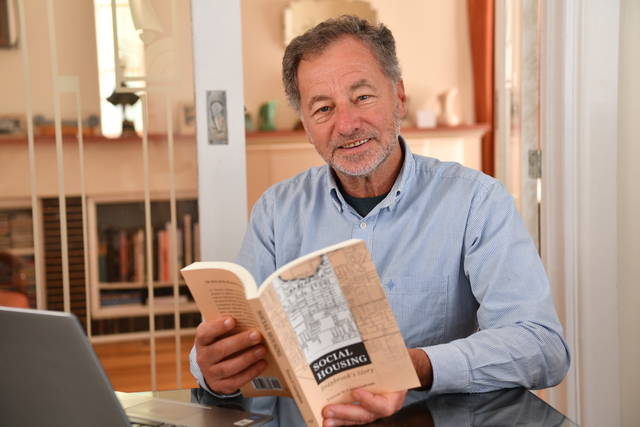Hannah Hammoud
In 1954, at just 16 days old, Trevor Cunningham and his family were some of the first residents of the new suburb, Braybrook.
In his recent book, ‘Social Housing: Braybrook’s Story’, published by Australian Scholarly Publishing, Cunningham delves into the intricate history of social housing in Braybrook, tracing its origins back to the 1950’s when the Housing Commission of Victoria initiated the development.
Cunningham’s family were on the housing commission waitlist for a home when they were allocated the three-bedroom house in Braybrook. Having lived in the suburb for 21 years, Cunningham said misconceptions about the suburb persist till this day.
“The perception and reality of Braybrook are two different things – and probably always have been,” he said.
“I grew up there and thought it was a great place to live. I enjoyed it … I think like every suburb it had issues, but that’s not uncommon. But I think as of late the suburb has had a poor image and that was one of the factors that motivated me to do the research and write the book – I felt that people were making judgements without understanding what the suburb was really like. And without knowing its history, and how that came about, it’s hard to make a judgement.”
Through meticulous research, Cunningham sheds light on the challenges faced by early residents, including inadequate infrastructure and substandard housing.
“The commission built houses but it didn’t provide the infrastructure,” he said.
“That’s a major issue with town planning and development in Australia generally. We build the homes and then the infrastructure follows later. It should be the reverse, where the infrastructure is established as an incentive to go and live in that area, and governments don’t seem prepared to do that.
“What came out of my research was the way the housing commission so poorly managed the estate. I always knew that getting maintenance in our house was difficult, but the attitude of the housing commission came through in my research. It was not a benevolent landlord at all, and the Royal Commission that was held into the operation of the housing commission revealed exactly that, that the commission’s attitude seemed to be ‘pay your rent, we’ll leave you alone, and don’t bother us.’ And that’s as far as it went.”
One of the key lessons gleaned from Cunningham’s book is the vital role of community in shaping Braybrook’s identity.
“The people who lived in Braybrook in the early days, made the most of their community,” he said.
“They built a community. The commission built houses, but the people built the community and they did a pretty good job of it. They provided what the government didn’t.”
Cunningham’s book, ‘Social Housing: Braybrook’s Story’ can be found in local bookshops or purchased directly from the publisher, Australian Scholarly Publishing.








